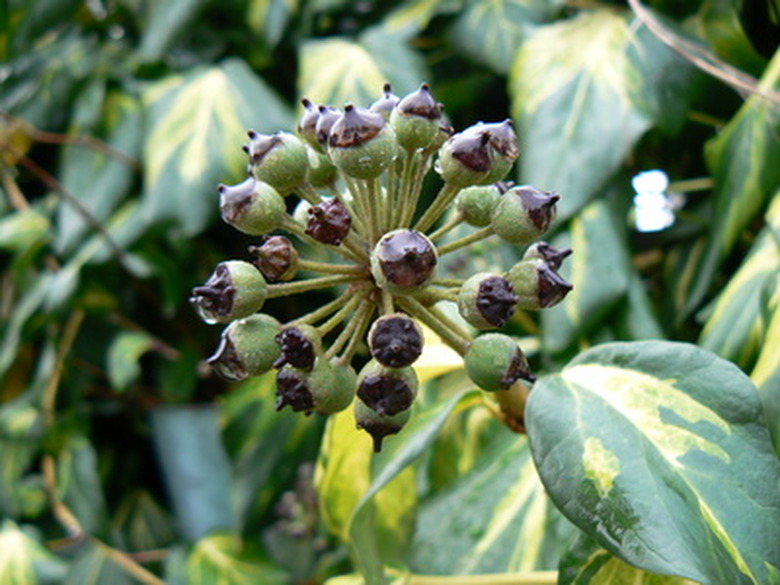The Highest Oxygen-Producing House Plants
Plants absorb carbon dioxide and emit oxygen through photosynthesis. In this manner, forests help balance the air quality on earth. However, indoor air quality is poorer compared to outdoor air quality, especially when there are no plants present. Adding plants can help purify the air through oxygen emission. Try some of the best oxygenic indoor plants that you can grow indoors to help clean your indoor air.
Areca Palm
Areca palm (Chrysalidocarpus lutescens), also known as yellow butterfly palm, bamboo palm or cane palm, is one of the highest air-purifying indoor plants, according to NASA. It reaches a height of up to 30 feet with a spread of up to 10 feet. Its green, clump-forming, gently arching, ringed trunks look like bamboo due to the presence of rings surrounding the trunks. The green trunks have curved yellow-green fronds that are feathery. Spiral, odd pinnately compound, evergreen leaves are linear in shape with parallel venation.
- Plants absorb carbon dioxide and emit oxygen through photosynthesis.
- Adding plants can help purify the air through oxygen emission.
Areca palm produces small, white, inconspicuous flowers along its 3-foot stalks and bloom in spring. Small, oblong, fleshy fruits measuring up to 1 inch appear among the leaves and ripen all year. The fruits come in black, red or brown color.
Areca palm requires part shade/part sun exposure to grow and can tolerate clayey, loamy, sandy soils that are slightly alkaline or acidic, well-drained or occasionally wet. It is moderately drought tolerant. Areca palm thrives in USDA Hardiness Zones 9 to 11.
Baby Rubber Plant
Baby rubber plant (Peperomia obtusifolia) is a herbaceous perennial that thrives in USDA Hardiness Zones 10 to 12. It is one of the top air-purifying plants tested by NASA. It emits high oxygen content to fight off indoor air pollution. It removes chemicals such as formaldehyde from air. Baby rubber plant grows up to 1 foot high and spread up to 1 foot wide. Oblong, waxy, thick, elliptic, variegated dark green leaves measuring 6 inches long grow from fleshy stems. Small greenish-white flowers measuring up to 5 inches across are not showy.
- Areca palm produces small, white, inconspicuous flowers along its 3-foot stalks and bloom in spring.
- Areca palm requires part shade/part sun exposure to grow and can tolerate clayey, loamy, sandy soils that are slightly alkaline or acidic, well-drained or occasionally wet.
Baby rubber plant prefers a day-time temperature of 80 degrees F and night-time temperature of 65 degrees F. It requires low light and low water. Allow soil to dry slightly between watering to avoid over-soaking, which can lead to problems.
English Ivy
Dubbed as "fix for allergies" by WebMD, English ivy (Hedera helix), cleans air effectively. Furthermore, according to Kenneth Kim, M.D., of Allergy, Asthma and Respiratory Care Medical Center in Long Beach, California, English ivy reduces indoor mold counts. NASA lists English ivy as one of the top air purifying plant that they tested.
English ivy has alternate, simple, thick, dark green to blue green leaves that measure 4 inches long. Leaves can be lobed or unlobed and ovate. Small, greenish white flowers appear in round clusters and bloom in fall. Round black fruits measure 1/4 inch across and ripen in winter. Slender, light green to light brown twigs have aerial rootlets that help the English ivy creep and attach to the ground, trees, rocks or walls. If left unattended the English ivy can be invasive. Trim it in spring to keep it manageable.
- Baby rubber plant prefers a day-time temperature of 80 degrees F and night-time temperature of 65 degrees F. It requires low light and low water.
- Slender, light green to light brown twigs have aerial rootlets that help the English ivy creep and attach to the ground, trees, rocks or walls.
English ivy grows in USDA Hardiness Zones 4 to 9. It prefers a well-drained soil in part shade to full shade.
